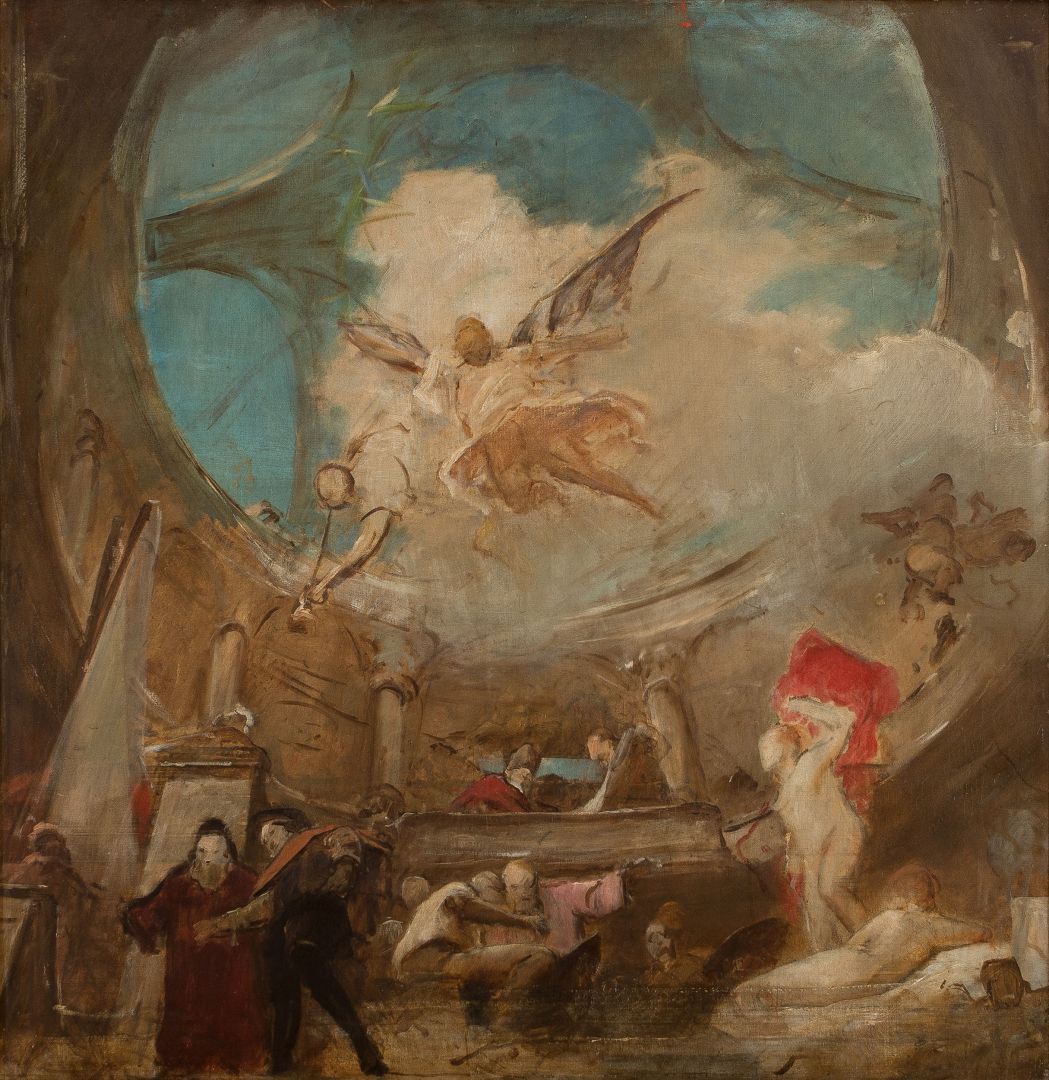Hall 2 - 4. view
The Apotheosis of the Renaissance (stage sketch)
MUNKÁCSY, MIHÁLY (1844–1900)
The Apotheosis of the Renaissance (colour sketch), 1885
oil on canvas, 95x91 cm; unmarked
Fine Arts Collection, Inv. No.: 94.1.
Mihály Munkácsy was still a child when his father received the position of state official in Miskolc. Therefore his earliest memories are tied to the town and the nearby castle of Cserépvár. After the demise of Munkácsy’s parents, the children were relocated to their relatives, with Mihály being taken in by his uncle at Békéscsaba. Later on the renowned painter regularly visited his relatives as well as the grave of his parents in Borsod County. The granite-pillared tomb in the Mindszent cemetery was commissioned by the artist in 1885, which can still be found to this day.
Due to his ties to Miskolc, the Herman Ottó Museum always strived to offer a proper representation of the painter’s artworks in its collection. With the acquisition of the art collection of Dr. Sándor Petró in 1977, the Munkácsy painting titled Landscape with Castle Ruins was added to the gallery. This painting was purchased by the museum in 1994.
The Apotheosis of the Renaissance was a ceiling painting made for the hall of the Kunsthistorisches Museum in Vienna, and it represents an important stage in the oeuvre of Munkácsy. Being commissioned by the Court of Vienna was considered to be a great honour, but the task also posed a great challenge for the artist as well, since the illusionistic decoration of architectural surfaces have different requirements than traditional board painting. Starting from 1884, it took five years for the composition to take shape. Based on the finalized plan, the panel painting affixed to the ceiling and giving the impression of a fresco to the viewer was completed in 1890. The allegoric image glorifying Renaissance art has the figure of Tiziano as its centrepiece, who is depicted teaching young and upcoming talented artists. Above the master and his students the winged figure of Genius, the personification of exceptional talent, can be seen floating.
The colour sketch of the ceiling painting held in Miskolc is closer to the finalized piece than the earliest sketches, which lack architectural details. Only one more major addition would be added to the main structural elements of the painting, along the bottom edge of the image. The ceiling painting in Vienna also features a staircase with balustrade railing, which guides the viewer’s gaze towards the symbolic studio of the Renaissance masters.
Andrea Pirint
